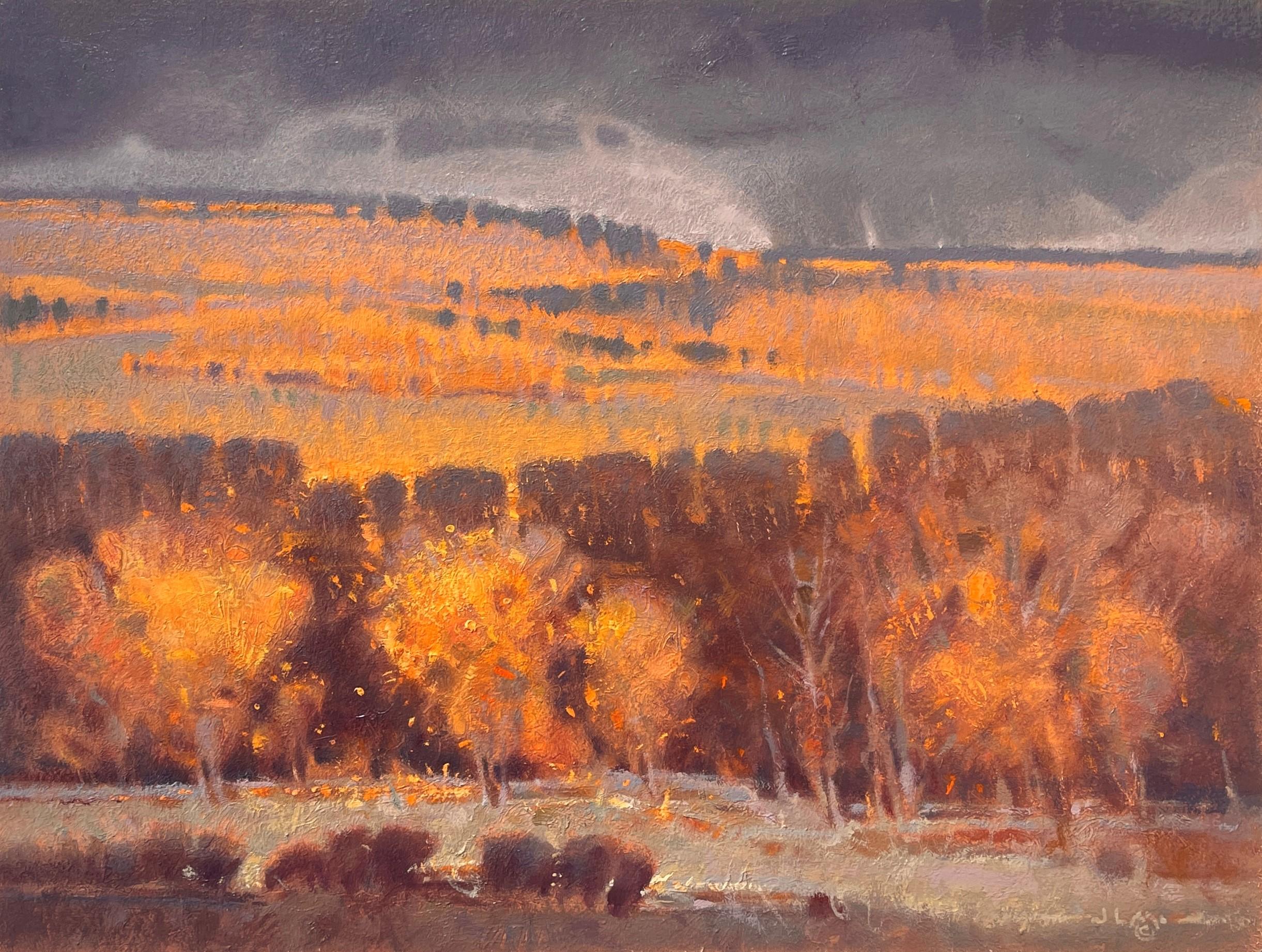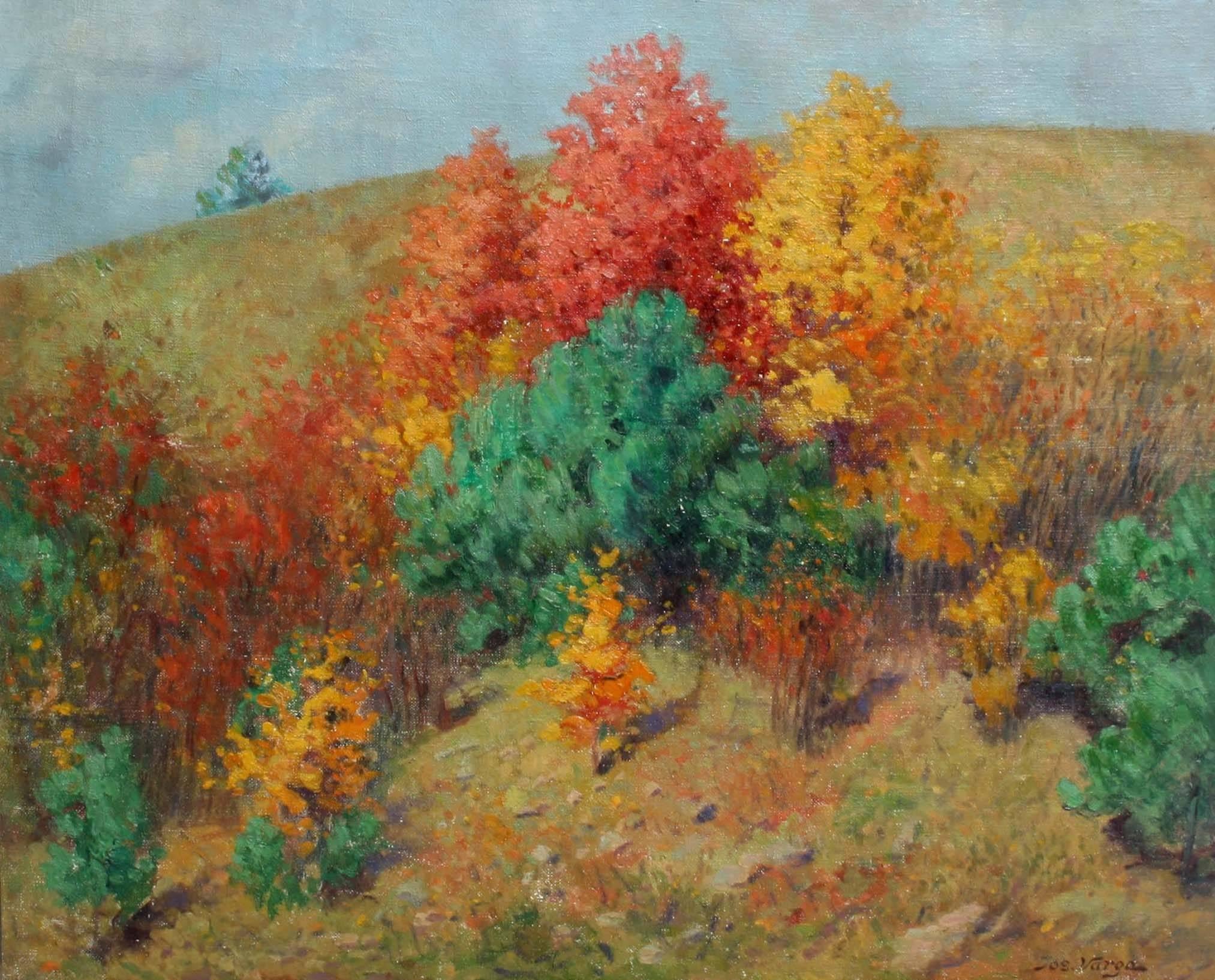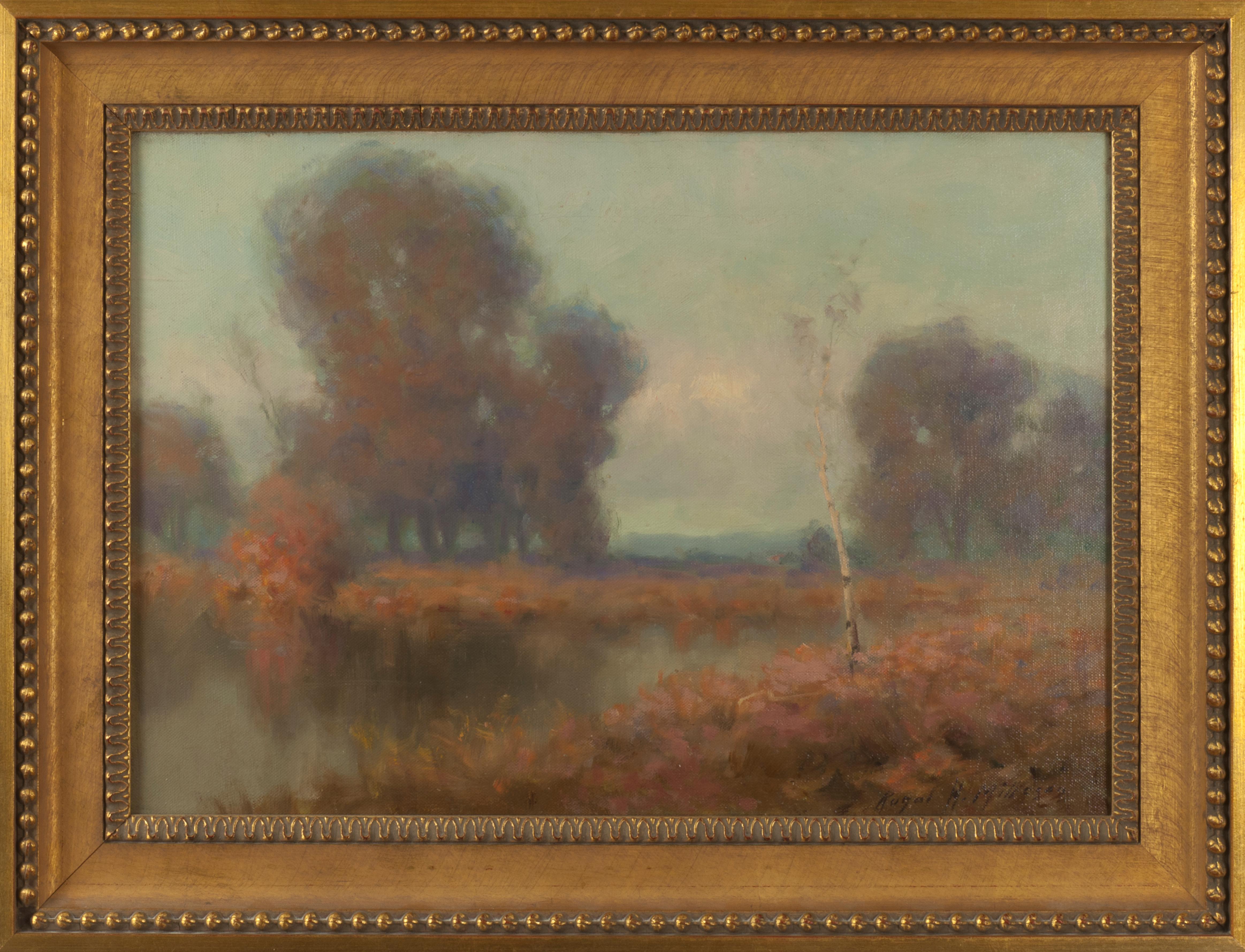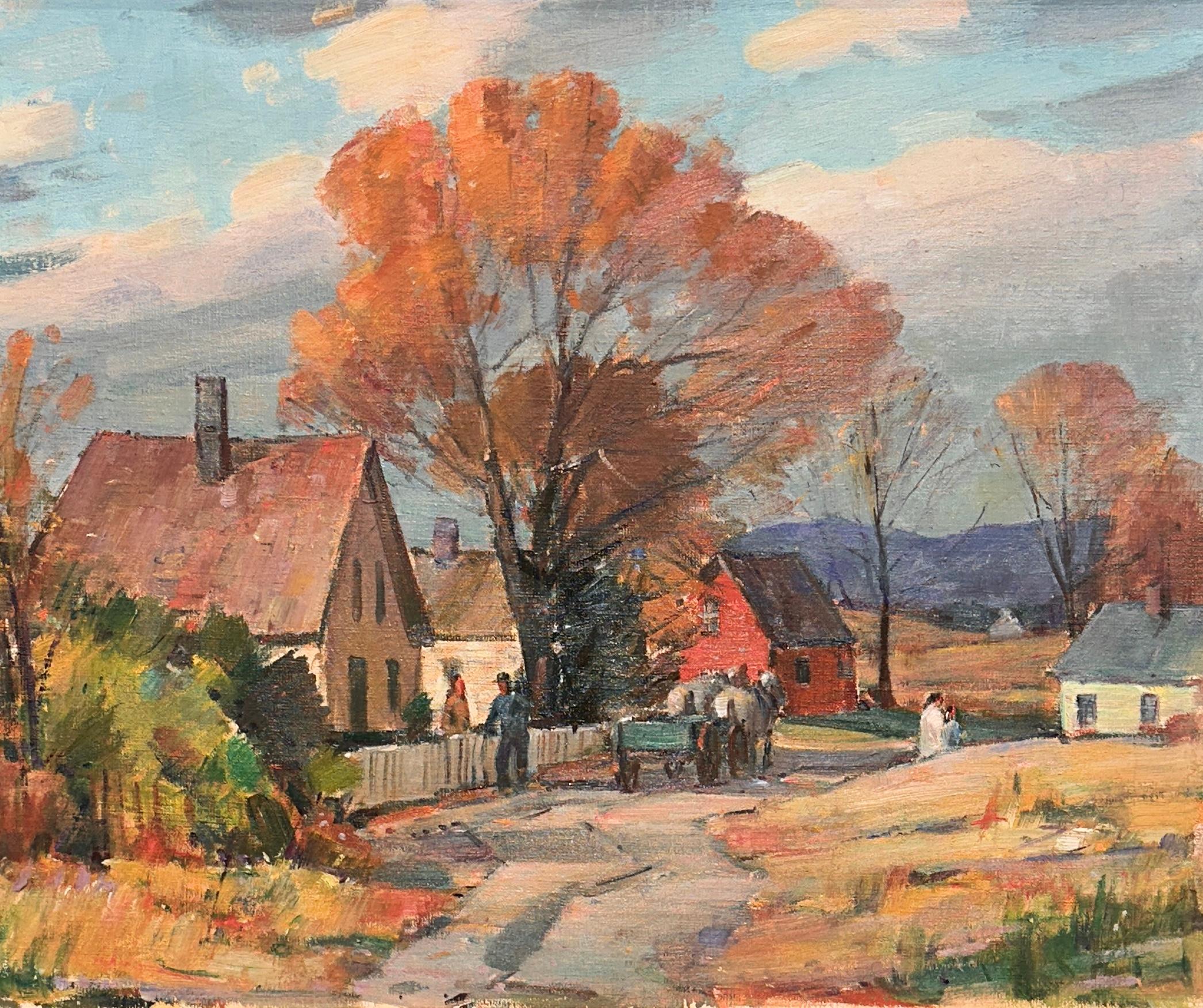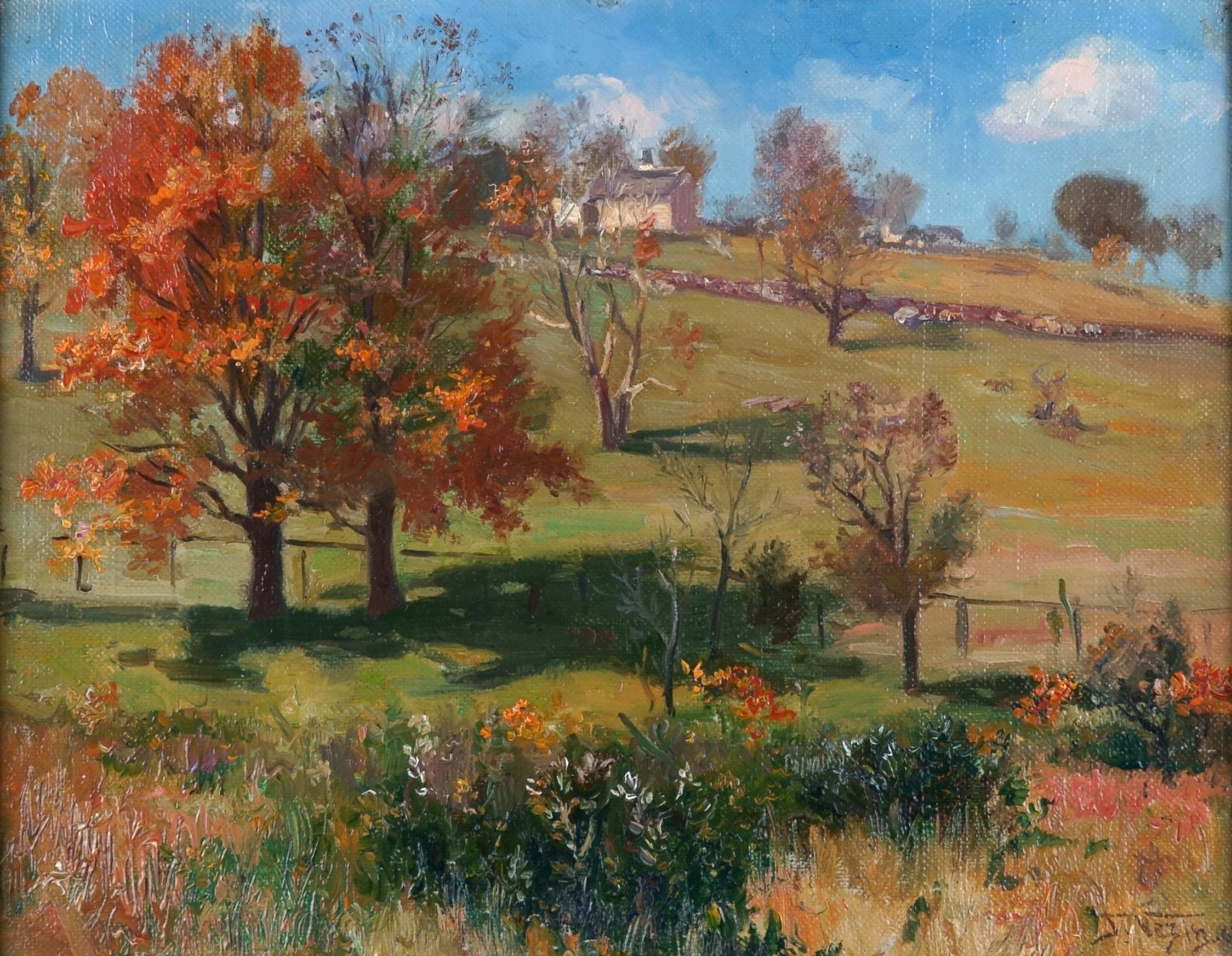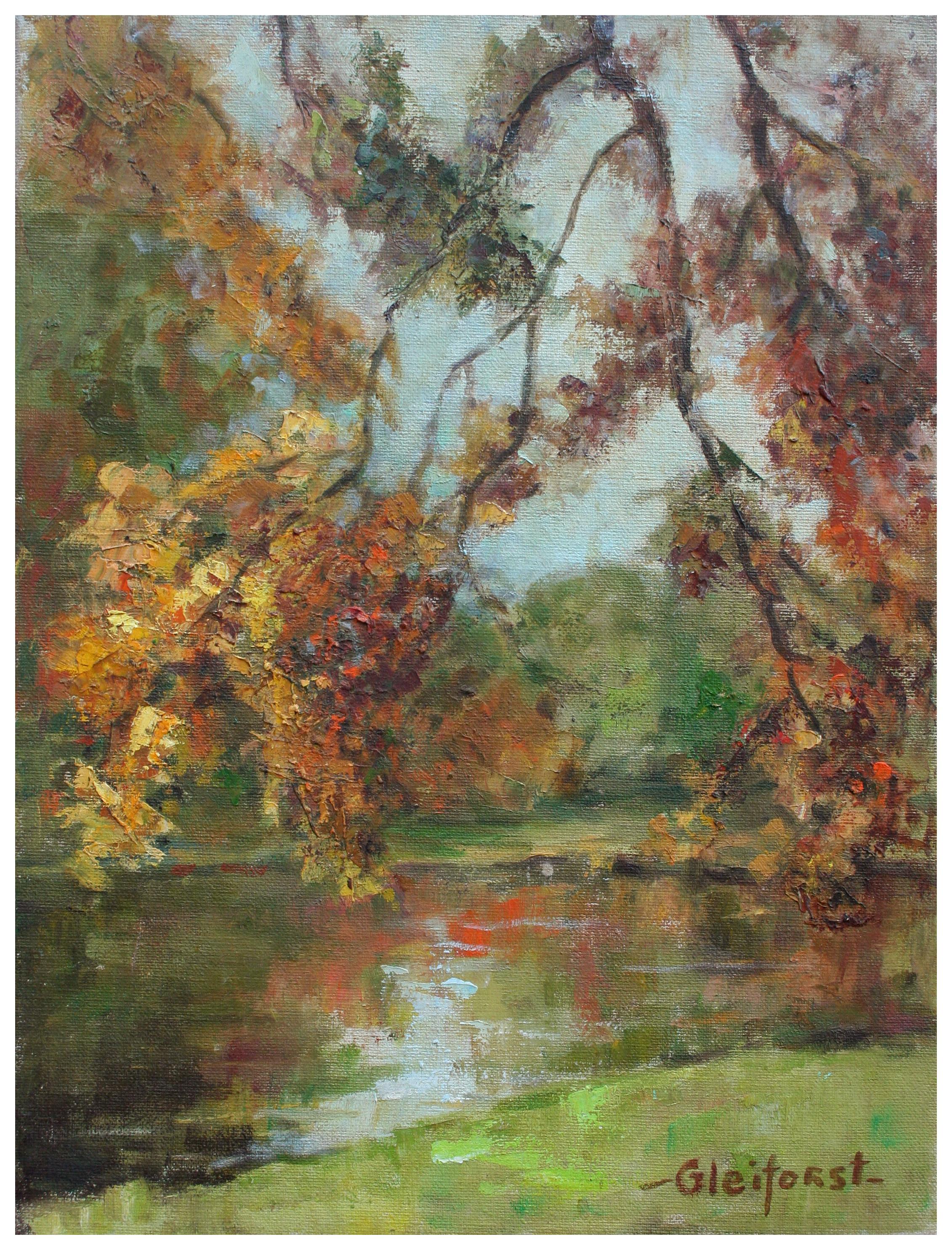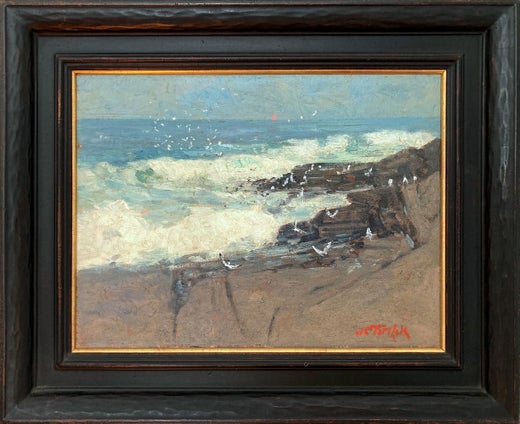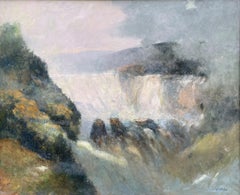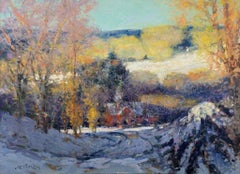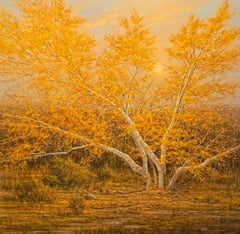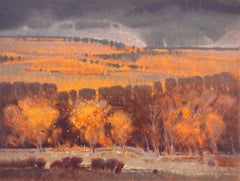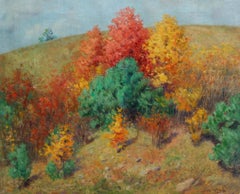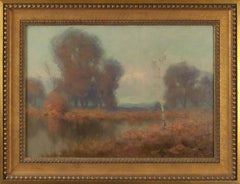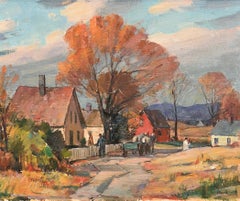Items Similar to Autumn
Want more images or videos?
Request additional images or videos from the seller
1 of 5
John TerelakAutumn2023
2023
$18,500
£13,910.74
€16,085.09
CA$26,108.61
A$28,329.15
CHF 15,028.09
MX$347,879.77
NOK 185,848.63
SEK 175,998.43
DKK 120,068.51
About the Item
John Terelak Biography (American, b. 1942)
John Charles Terelak is recognized as one of America's finest living impressionists. Born in Boston, Massachusetts, he received formal art instruction at the Vesper George School of Fine Art. Terelak's love of paint and canvas and his thorough understanding of color theory and paint technique eventually led him to become Headmaster of the Gloucester Academy of Fine Art. As demand for his work grew, it eventually became necessary for John to devote his full energies to the creation of his own paintings. Since making that decision he has enjoyed outstanding and continuing success in his career. His professional career at the easel now spans more than three decades. In addition to his beautiful work in oil, Terelak is also a master in watercolor and pastel. He is also a past President of The New England Watercolor Society.
While the subject matter of Terelak's paintings is as diverse as the world in which he lives, the 'Terelak touch' is unmistakable in each of his works. An intricate system of layered paint and glazing, incredible use of color, and rich surface texture are hallmarks of his paintings. He has a gift for observation and the ability to paint with both freshness and emotion. His paintings may capture the tranquility of an early spring morning in the Vermont countryside, the beaches of Cape Cod in the summer, a woman hanging her laundry, the great harbors of New York, the hustle and bustle of Times Square, or the serenity of the French countryside. John does a considerable amount of location work. He loves to set his easel up in the woods and chase the passing light with his brush and paints. While exercising appropriate creative license, he documents the beauty of his surroundings and posterity is somewhat the richer for every canvas he completes.
Terelak once said, "I've been painting for over twenty-five years, and after all that time, I still love to paint. I get enormous pleasure just from the smell of paint and turpentine, from the actual physical process of mixing paints and applying them to the canvas. I'm a very intense painter, and I'm certainly a 'messy' painter, but at the same time I'm also very patient and painstaking. I take a long time with my paintings, working and reworking them, adding layer after layer of paint, and glazing the surface again and again. I want the actual surface of the canvas to have a rich patina, a depth and texture that is beautiful in its own right, quite independent of the images and colors involved. Actually, whether I'm painting Monet's garden at three in the afternoon, or Times Square at three in the morning, the real content of my work is color and light. What I'm really doing is playing off one color against another, creating color harmonies that evoke different moods and feelings. I've been called an American traditionalist and impressionist, but those are just labels. In fact, the only thing that really matters is the work itself, and the feelings the work produces.”
The reception Terelak's work has received from serious collectors is strong evidence that his paintings will be recognized as an important and permanent part of the best of American fine art created in this century. His paintings are included in thousands of private and public collections throughout the United States. Included are the Andrew Mellon Foundation, Sheraton Corporation, Winthrop Financial Corporation, Prudential Insurance Company, Bank of Boston, Shawmut Bank, State Street Bank, Boston, and Sterling-Regal Publishing Company. Included among Terelak's private collectors are many prominent persons from the business world, the entertainment and sports industries, and perhaps most significantly of all, the art community itself. John Terelak has had a number of successful one-man shows. His works have been included in exhibitions at The National Academy of Design, The Boston Museum of Fine Arts, The Springfield Museum, and The Butler Museum, among others.
- Creator:John Terelak (1942, American)
- Creation Year:2023
- Dimensions:Height: 28 in (71.12 cm)Width: 36 in (91.44 cm)
- Medium:
- Movement & Style:
- Period:
- Condition:
- Gallery Location:Greenwich, CT
- Reference Number:1stDibs: LU18113085522
John Terelak
American, b. 1942 John Charles Terelak is recognized as one of America's finest living impressionists. Born in Boston, Massachusetts, he received formal art instruction at the Vesper George School of Fine Art. Terelak's love of paint and canvas and his thorough understanding of color theory and paint technique eventually led him to become Headmaster of the Gloucester Academy of Fine Art. As demand for his work grew, it eventually became necessary for John to devote his full energies to the creation of his own paintings. Since making that decision he has enjoyed outstanding and continuing success in his career. His professional career at the easel now spans more than three decades. In addition to his beautiful work in oil, Terelak is also a master in watercolor and pastel. He is also a past President of The New England Watercolor Society. While the subject matter of Terelak's paintings is as diverse as the world in which he lives, the 'Terelak touch' is unmistakable in each of his works. An intricate system of layered paint and glazing, incredible use of color, and rich surface texture are hallmarks of his paintings. He has a gift for observation and the ability to paint with both freshness and emotion. His paintings may capture the tranquility of an early spring morning in the Vermont countryside, the beaches of Cape Cod in the summer, a woman hanging her laundry, the great harbors of New York, the hustle and bustle of Times Square, or the serenity of the French countryside. John does a considerable amount of location work. He loves to set his easel up in the woods and chase the passing light with his brush and paints. While exercising appropriate creative license, he documents the beauty of his surroundings and posterity is somewhat the richer for every canvas he completes. The reception Terelak's work has received from serious collectors is strong evidence that his paintings will be recognized as an important and permanent part of the best of American fine art created in this century. His paintings are included in thousands of private and public collections throughout the United States. Included are the Andrew Mellon Foundation, Sheraton Corporation, Winthrop Financial Corporation, Prudential Insurance Company, Bank of Boston, Shawmut Bank, State Street Bank, Boston, and Sterling-Regal Publishing Company. Included among Terelak's private collectors are many prominent persons from the business world, the entertainment and sports industries, and perhaps most significantly of all, the art community itself. John Terelak has had a number of successful one-man shows. His works have been included in exhibitions at The National Academy of Design, The Boston Museum of Fine Arts, The Springfield Museum, and The Butler Museum, among others.
About the Seller
4.7
Gold Seller
Premium sellers maintaining a 4.3+ rating and 24-hour response times
Established in 1986
1stDibs seller since 2013
171 sales on 1stDibs
Typical response time: 2 hours
- ShippingRetrieving quote...Shipping from: Greenwich, CT
- Return Policy
Authenticity Guarantee
In the unlikely event there’s an issue with an item’s authenticity, contact us within 1 year for a full refund. DetailsMoney-Back Guarantee
If your item is not as described, is damaged in transit, or does not arrive, contact us within 7 days for a full refund. Details24-Hour Cancellation
You have a 24-hour grace period in which to reconsider your purchase, with no questions asked.Vetted Professional Sellers
Our world-class sellers must adhere to strict standards for service and quality, maintaining the integrity of our listings.Price-Match Guarantee
If you find that a seller listed the same item for a lower price elsewhere, we’ll match it.Trusted Global Delivery
Our best-in-class carrier network provides specialized shipping options worldwide, including custom delivery.More From This Seller
View AllThe Source
By John Terelak
Located in Greenwich, CT
American, b. 1942
John Charles Terelak is recognized as one of America's finest living impressionists. Born in Boston, Massachusetts, he received formal art instruction at the Vespe...
Category
2010s American Impressionist Landscape Paintings
Materials
Canvas, Oil
$55,000
Early Snow
By John Terelak
Located in Greenwich, CT
John Terelak Biography
American, b. 1942
John Charles Terelak is recognized as one of America's finest living impressionists. Born in Boston, Massachusetts, he received formal art i...
Category
2010s American Impressionist Landscape Paintings
Materials
Canvas, Oil
$18,500
Sanctuary
By John Terelak
Located in Greenwich, CT
John Terelak Biography
American, b. 1942
John Charles Terelak is recognized as one of America's finest living impressionists. Born in Boston, Massachusetts, he received formal art i...
Category
2010s Landscape Paintings
Materials
Oil, Board
$30,000
Fallen Leaves
By Frank Corso
Located in Greenwich, CT
American, b. 1952
Frank Corso was born in Syracuse New York. Taking a keen interest in art at a very early age, he was inspired to draw and paint the landscape of the Finger Lakes r...
Category
2010s American Realist Landscape Paintings
Materials
Canvas, Oil
Early Sugaring
By John Terelak
Located in Greenwich, CT
American, b. 1942
John Charles Terelak is recognized as one of America's finest living impressionists. Born in Boston, Massachusetts, he received formal art instruction at the Vespe...
Category
2010s American Impressionist Landscape Paintings
Materials
Canvas, Oil
Cherry Blossoms
By John Terelak
Located in Greenwich, CT
American, b. 1942
John Charles Terelak is recognized as one of America's finest living impressionists. Born in Boston, Massachusetts, he received formal art instruction at the Vespe...
Category
2010s American Impressionist Landscape Paintings
Materials
Canvas, Oil
You May Also Like
"Season of Falling Leaves"
Located in Denver, CO
"Season of Falling Leaves" by Jim Morgan is an original oil painting depicting the brilliance of autumn color.
Roaming the canyons and fields around the small, central Utah town wh...
Category
2010s American Impressionist Landscape Paintings
Materials
Linen, Oil
Changing Leaves
By Joseph Varga
Located in Buffalo, NY
A beautiful antique impressionist painting by American artist Joseph Varga
Category
Early 1900s American Impressionist Landscape Paintings
Materials
Canvas, Oil
$1,800 Sale Price
25% Off
Autumn Landscape
By Royal Milleson
Located in Fairlawn, OH
Autumn Landscape
Oil on relined canvas, c. 1915
Signed lower right corner: "Royal H. Milleson"
Condition: Excellent
Canvas size: 14 1/2 x 20 3/8 inches
Frame size: 19-1/4 x 25-1/4 x 2-1/2 inches
Clearly among the artist's finest paintings!
Provenance: Private Collection, Greencastle, Indiana
Ray H. French Collection (1919-2000)
Martha A. French Trust
Royal Hill Milleson...
Category
1910s American Impressionist Landscape Paintings
Materials
Oil
Autumn Landscape Painting by Carl W. Peters
By Carl Peters
Located in Rockport, MA
This painting by Carl W. Peters captures an autumn scene, featuring a rural village with houses, a horse-drawn cart, and townspeople engaging in daily life. The rich autumnal hues of...
Category
20th Century American Impressionist Landscape Paintings
Materials
Oil
Autumn Landscape in Sunlight - Indian Summer -
Located in Berlin, DE
Frederick Vezin (1859 Torresdale Philadelphia - 1933 Düsseldorf), Autumn Landscape in the Sunlight, oil on canvas, mounted on cardboard, 32 x 41 cm (inside measurement), 44 x 51 cm (frame), signed and dates lower right "F. Vezin. [19]05".
- Cardboard slightly curved, small inconspicuous retouch at the centre of the upper edge of the picture.
About the artwork
Although the painting appears to be a sketch, Frederick Vezin considered it to be a finished work of art, as evidenced by his signature on the lower right. And it is precisely this sketchy quality that leads to an understanding of the painting, which was certainly created in the landscape itself: the natural phenomena were to be depicted artistically at the moment of their observation. This is not done by meticulously sketching nature, but - and here Vezin follows the teaching of French Impressionism - by illustrating nature in its visual fullness. The artist's eye is, as it were, immersed in the visuality of nature, which is made visible by his hand. The painting is therefore not a reflection of the landscape, but its artistic intensification.
This intensification also includes the fact that the foreground of the painting - corresponding to the field of vision - eludes a detail-oriented close-up view. Instead, the spatula-like application of paint, the vertical structure of which corresponds to the structure of the floral growth, has the effect of making nature tangible in its colourful substance.
At the same time, the foreground, which remains indeterminate in its concrete objectivity, creates an atmospheric space that connects with the actual protagonist of the picture, the group of trees, which flares up in shades of red and brown. Here, too, the leaves are more speckled than clearly outlined. It is precisely this 'sketchiness' that opens up a visual experience that makes the landscape accessible in its visual fullness, thus revealing its essence.
In addition to this abundance, the landscape is presented as a structure of order in that the composition of the picture makes the composition of the landscape visible. For example, the group of trees forms a distinct dark green shadow, which is repeated in the shadows cast by the trees behind it. A patterned diagonal axis is created in the picture, which is composed in this way by the landscape itself.
Strictly speaking, this is a cultivated landscape: a fence at the bottom and a low stone wall at the top, running from left to right, are two elements that also have a strong compositional effect. And on the top of the hill, a stone house is embedded in the landscape as the brightest surface in the picture. Nature and culture here form a harmonious synthesis, giving the painting an Arcadian touch.
In order to give the landscape as much space as possible, the horizon line is raised, but the design of the sky is also crucial. The clouds, combined with the shapes of the trees, create a bright blue sky. To the European eye, such a sky is reminiscent of a summer landscape. Accordingly, within the seasonal cycle, the blue sky is reserved for summer, and French Impressionism is also primarily an ode to summer. In Vezin's painting, however, the brilliant blue sky stands above an autumnal landscape, some of the trees even defoliated. It can therefore be assumed that the painting was made not in Europe but in the United States, and that it illustrates the proverbial Indian summer, making Frederick Vezin a pioneer of American landscape painting.
About the artist
Frederick Vezin was the son of a French immigrant to the United States and a German-born mother. This predestined him to promote artistic exchange between the old and new worlds. Having spent part of his schooling in Germany, in 1876, at the age of 20, he enrolled at the Düsseldorf Academy of Art, where he studied with Peter Janssen the Elder, Eduard von Gebhardt and Wilhelm Sohn, among others. He graduated in 1883, settled in Munich and returned to Düsseldorf in 1895, where he lived until his death in 1933.
A native of the United States, he travelled to the country frequently and became a popular portrait and society painter. His artistic talent, however, was most evident in his landscape paintings. Trained in French Impressionism, he developed a virtuoso use of colour and a free brushwork that remained tied to the landscape motif, opening up the landscape itself in a new way. Frederick Vezin turned his attention primarily to the landscape of his homeland, becoming a pioneer of modern American landscape...
Category
Early 1900s Impressionist Landscape Paintings
Materials
Cardboard, Oil
$2,106 Sale Price
20% Off
Mid Century Autumn Trees Landscape
By Helen Enoch Gleiforst
Located in Soquel, CA
Beautiful autumn landscape by California artist Helen Enoch Gleiforst (American, 1903-1997). Signed "Gleiforst" lower right. Unframed. Image size: 16"H x 12"W.
Helen Gleiforst was b...
Category
1950s American Impressionist Landscape Paintings
Materials
Oil, Canvas
More Ways To Browse
New England Watercolor
Monets Garden Painting
John Charles Terelak
Vintage Lake Signs
Canada Landscape Oil Paintings
Carmel Oil
Farmhouse Oil Painting
Landscapes Oil Artist H Hudson
Paintings From Taos Nm Artists
Riley Artist
Russell Oil Paintings
Sunrise Impressionist
Surreal Landscape Oil Paintings
Union Pacific
Used Church Steeples
William Sawyer
American Impressionism Painting
Antique Paintings 1922
